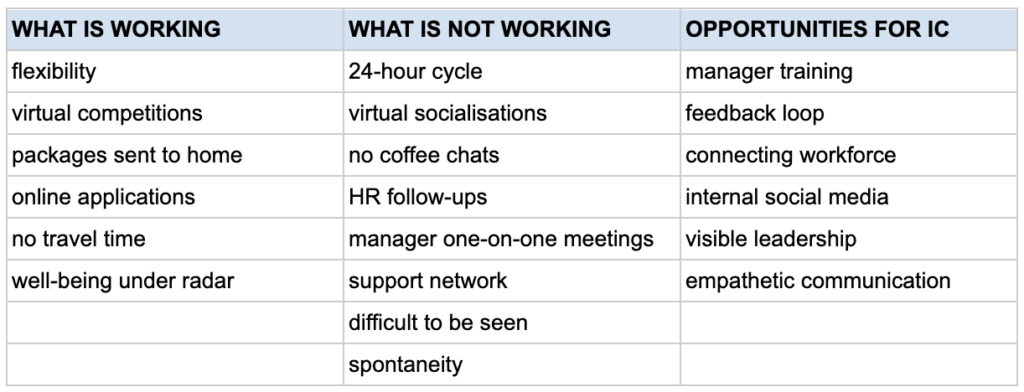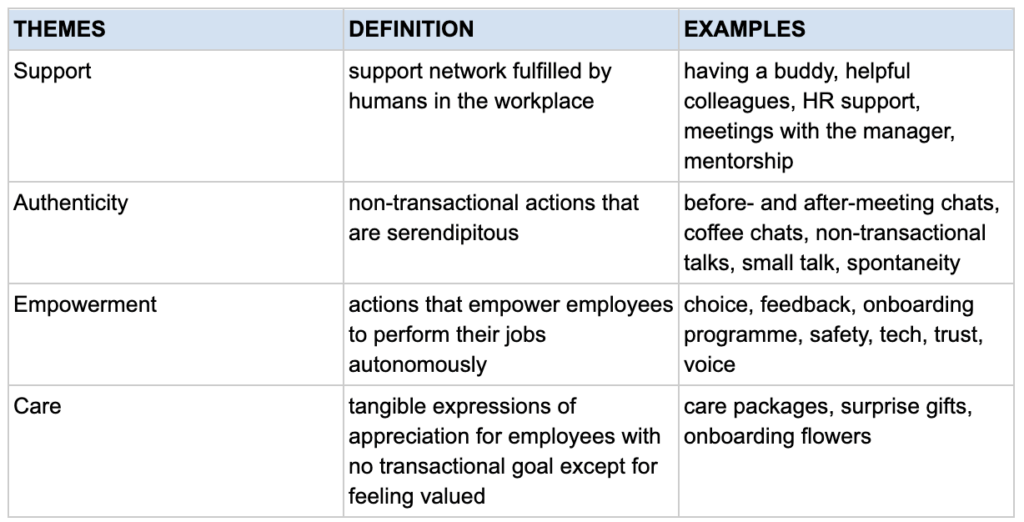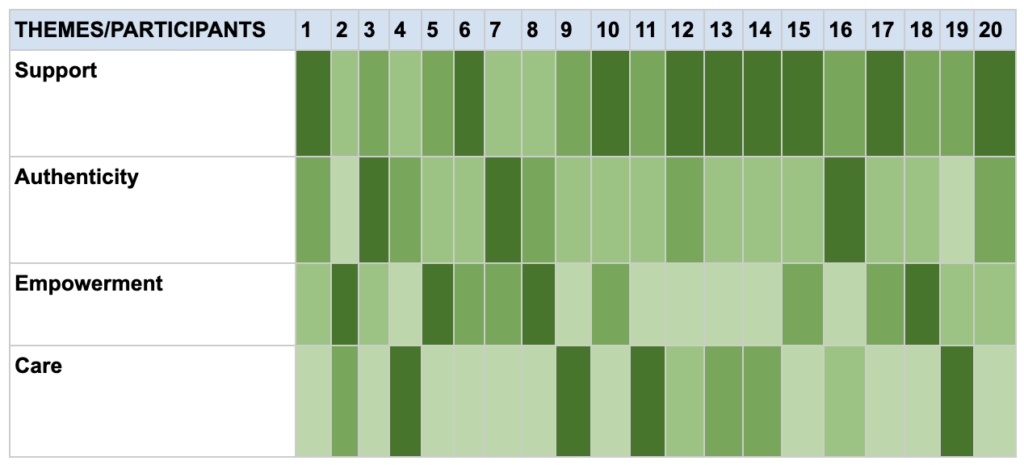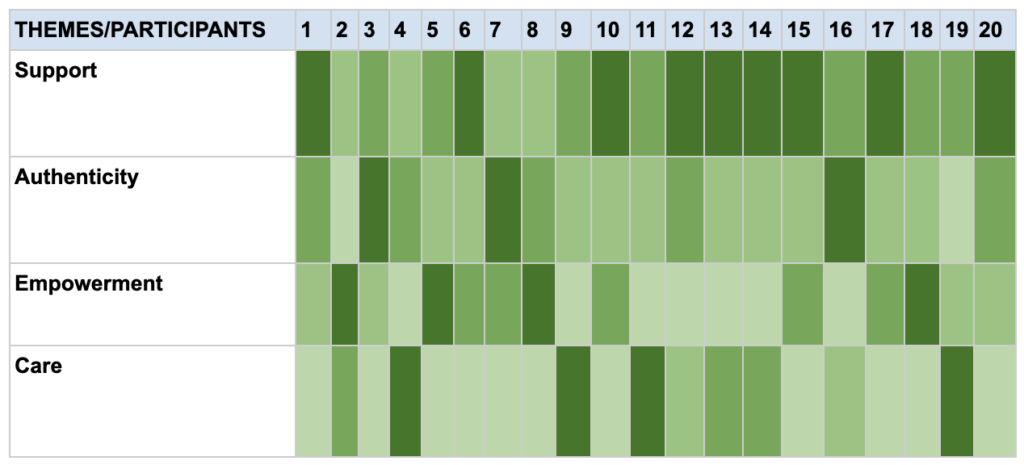This blogpost is part of the “Belonging is a mindset” blog series derived from my academic research on ‘internal communication and belonging in the virtual workplace’ for the Rotterdam School of Management, Erasmus University. The data from this study was collected from new hires who started their jobs in the middle of the pandemic and internal communication practitioners. This blogpost is part of the findings and results section.
As the newly-hired employees reflected on their experiences in the virtual workplace, they talked about what is currently working, what is not working, and what they would like to see change.

Interview themes
The table above shows that employees valued the flexibility of working from home, receiving packages, and the ease of applying for a job. They did miss a support network, coffee break chats with colleagues, and found it difficult for their work to be seen. Some also found the 24-hour cycle challenging. This provides opportunities for internal communication in promoting workforce connection, supporting management communication, and creating a feedback loop where employees feel recognised and seen.
The opportunities for internal communication in this table provided a starting point for what would be the themes of the participant interviews.
After analysing all individual interviews, I observed four themes that were most significant in designing a sense of belongingness in the virtual workplace. I coded them as Authenticity, Care, Empowerment, and Support.

Themes per participant
Below is the distribution of the categories per participant. The deeper the color shows the dominance of the theme per participant. For example, Participant 1 finds Support the most important of all these themes even when he/she mentioned all the themes during the interview. The words that support the main themes as described in Table 6 were mentioned by the employees themselves.

Themes in a nutshell
Support, referring to a human support network that is mostly led by the line manager in a newly-hired employee’s experience, is the most dominant theme of all four themes. This could also be performed by a buddy, a colleague, a mentor or HR. This theme was most dominant in the interviews with nine of the 20 employees interviewed and the second dominant theme for seven of the interview participants.
The second dominant theme is Authenticity which pertains to spontaneous, non-transactional, organic moments of connection such as chats before and after meetings, virtual coffee chats, small talk or virtual catch-ups, bumping into someone in the watercooler in a physical office, events that are serendipitous. I used the word Authenticity to code this theme because these are actions that bring out the authentic self in people and relationships. Stephen Joseph (2017) defined authenticity as, “when people feel truly accepted for who they are, they don’t feel the need to put on a façade” (p. 10).
The third dominant theme is Empowerment. I chose this word because these are actions that empower employees to do their jobs autonomously from home. It is an important element of the virtual workplace where employees are expected to be independent. These elements include technology, a good onboarding to an environment of safety and trust where they can speak up or make their own choices. This also includes quick feedback which makes them feel that “there is someone at the other end of the line” (Participant 11).
The fourth dominant theme that shows in the interviews is Care. I chose the word Care as the overarching theme for when employees feel cared for. For example, employees appreciate receiving surprise packages on their doorstep and being given the feeling that their contributions are valued. It makes employees feel thought of and taken care of even from afar.
Next up
In the next blogpost, let’s take a deep dive into the SUPPORT theme.
References
- You will find a full list of references here.



